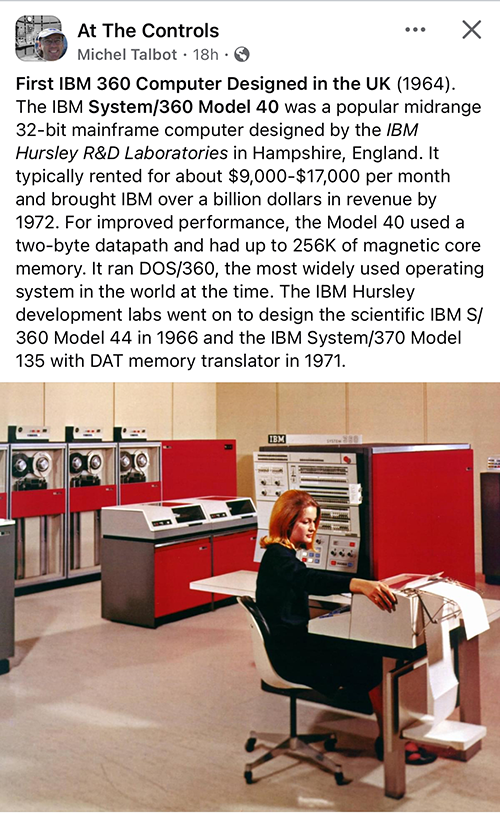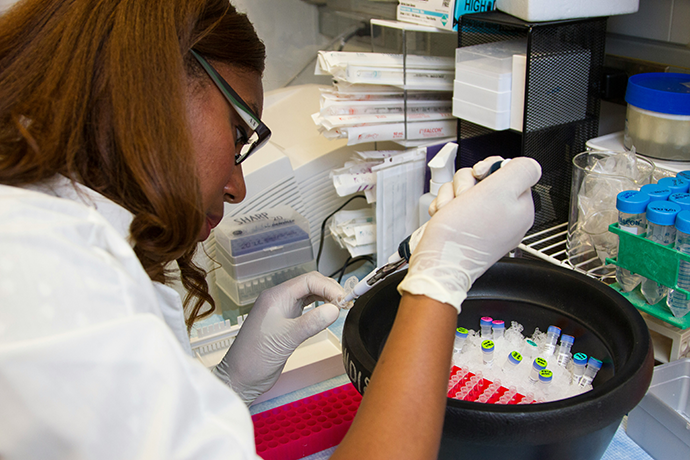Hello! Summer is almost done and I’d like to share a third topic – citizen science projects – that might be fun to consider for the new school year. There’s also what makes a game great, data types, and a sign language glove project that reveals a lot about our society. And of course a Dad joke about math books.
Citizen Science Projects
With the new school year, whether in a classroom or at home, citizen science projects are a great way to do science. And learn about science.
While it’s easy to leave science to scientists and experts, it’s also easy to forget we live in the natural world of trees, lakes, rocks, flowers, and much more. Citizen science projects are a fun way for schools, families, community groups, and individuals to contribute hands on to science and our understanding of the natural world.
All you need is a smartphone, time, and an internet connection to research possible projects. Scientists post their projects and use data collected by non-scientists for their research. For example, NASA has a citizen science project asking people to take pictures of trees from the ground so one of their satellites orbiting the earth can correctly calculate the number of trees on our planet. Turns out their satellite can count trees but can’t calculate the height of trees.
If you’re interested, here are several places to start your search for a fun project. Definitely search online for the terms citizen science and maybe add your country name to these terms to find local opportunities.
US Government Citizen Science Projects
https://www.citizenscience.gov/catalog/
Zooniverse
https://www.zooniverse.org/
National Geographic Citizen Science Projects
https://www.nationalgeographic.org/idea/citizen-science-projects/
Scientific American Citizen Science Projects
https://www.scientificamerican.com/citizen-science/
Citizen Science Projects – Wikipedia
https://en.wikipedia.org/wiki/List_of_citizen_science_projects
Help NASA Measure Trees with Your Smartphone
https://www.nasa.gov/feature/goddard/2019/help-nasa-measure-trees-with-new-app
NASA Globe Observer Citizen Science Program
https://observer.globe.gov/
SciStarter Citizen Science
https://scistarter.org/citizen-science
Amazing citizen scientist projects
https://www.kcedventures.com/blog/12-amazing-citizen-scientist-projects-for-kids
Kids make great citizen scientists
https://www.sciencenewsforstudents.org/article/kids-make-great-citizen-scientists
Six citizen science projects
http://simplegreenorganichappy.com/2016/05/6-citizen-science-projects-for-2016-for-kids/
What Makes a Great Game?
Researching this question, and talking with my son who has a Game Programming degree from RIT, I learned there’s two things to consider: gameplay and game mechanics. Gameplay is the user experience of the game. Game mechanics are the rules of the game. Both have to work together to make a game a great experience.
In a game of chess, the mechanics are each piece’s individual rules for movement. The gameplay happens when players apply those rules to make a choice about which move to make. Chess and Tic Tac Toe are examples of solved games. They have strict rules that lead to one result. While most or all games have solutions, some games are less about the rules and more about experience.
When people talk about gameplay they’re often talking about the “gameplay loop.” Not every gameplay loop is written out explicitly. The idea is that you can identify and define the key decisions, actions and emotions a player repeats as they play a game. This can be moment-to-moment, or it can be a matter of longer-term goals. Strong gameplay design tends to have an effective and engaging loop. It’s enjoyable enough that the player will want to repeat it.
Finding links also proved interesting. My son had better luck than I did. Video game history started with games for teens and adults. Many videos about making great games show violence. That may or may not interest you. On the fun side, the mathematician’s article has a Monopoly insight. Buy property 5-7 spaces after the Jail spot. Rolling two dice most often yields 5, 6, or 7. Buying property after the Jail spot is a good way to make money in Monopoly. Lots of people go to jail. 🙂
Designing The Core Gameplay Loop: A Beginner’s Guide
https://gamedesignskills.com/game-design/core-loops-in-gameplay/
https://gamedesignskills.com/game-design/gameplay-design/
https://gamedesignskills.com/game-design/types-of-game-designers/
From Tic-Tac-Toe to Monopoly, a mathematician reveals the design secret of great games
https://www.fastcompany.com/91016198/tic-tac-toe-monopoly-mathematician-design-secret-of-great-games
How to Never Lose at Tic Tac Toe
https://youtu.be/mExQ8bz3Gno
Elements of Coding: Data Types
This is the second in a series about common elements across programming languages. Once you learn one language, identifying these elements is a way to learn new languages quickly. Plus, you’ll get a deeper understanding about the problems languages have to solve. And the trade offs languages make. Last week explored variables that store data. This week is about the different types of data stored in variables and used in code.
Would you multiply the words SpongeBob times Squarepants? It makes more sense to multiply the number 5 times 33, doesn’t it?
Programming languages avoid this kind of error by using data types. A person’s first name and last name are identified as strings while the numbers 5 and 33 are identified as integers, a fancy word for numbers. Data types help languages process data efficiently with as few preventable errors as possible.
Other common data types are boolean (like true or false, yes or no), and floating integers (fractional numbers often expressed with decimals, like 1.23). But there are more data types.
As you learn a programming language, look up the data types available for a language. And how they’re treated in code by the language. For example, an array is a common data type. But Python uses lists and dictionaries instead of arrays. Python treats data differently than other languages that work with arrays. However, arrays, lists, and dictionaries are ways to collect, organize, and look up related data. When you play a video game and collect prizes or gear, that information is stored in an array, list, or dictionary. Which data type depends on the language and application goals.
These links are a mixed bag. The Stack Overflow post gives a good idea about programmers think about data types. The Wikipedia article goes in depth after providing a simple explanation. The Clip 7 video probably is the best for showing how data types are used. And the other two videos show how two languages work with data types.
Array/list vs Dictionary (why we have them at first place)
https://stackoverflow.com/questions/2695024/array-list-vs-dictionary-why-we-have-them-at-first-place
Data Types
https://en.wikipedia.org/wiki/Data_type
Data Types (Clip 7): Gentle Introduction to Programming
https://www.youtube.com/watch?v=8cTu_RrkiME
Variables and Data Types Explained (Python)
https://www.youtube.com/watch?v=v2b6URMGnGs
Java Tutorial For Beginners – Java Data Types
https://www.youtube.com/watch?v=xTWk-LRFydo
MIT Sign Language Gloves
Information often moves slowly on social media. Lots of content is evergreen, it flows back and forth over years. Recently, I came across a story on social media about two college students who created gloves that translate and speak American Sign Language (ASL). Their invention is called SignAloud. While the story sounded new, in fact it dates from 2016. And while their award came from MIT, the students Thomas Pryor and Navid Azodi were studying at the University of Washington in Seattle.
Perhaps more interesting, the time that has elapsed yielded an online conversation about the social benefits of this kind of invention and technology.
For example, apparently hand signs are only part of how people with hearing issues communicate. Facial expressions also give meaning and context to the hand gestures. ASL also is one of several languages they can use.
As a result, while these gloves are interesting they’re not entirely useful. And they exist in a culture where people who lack the ability to hear are sensitive to people who can hear try to solve their problems communicating. The impulse is well meaning. Often it’s because a person has someone in their life that they want to help. But the expression and how it is received can be negative. It’s a great lesson about how technology can solve problems but it matters more how humans accept and work with the technology.
Last, the video on their Lemelson MIT page is an excellent and inspiring description of how hackathons can solve problems with technology. And the Q&A session at the end shows the students are aware of the social issues with their invention. The Lemelson MIT website and YouTube channel also is worth looking up.
UW undergraduate team wins $10,000 Lemelson-MIT Student Prize for gloves that translate sign language
https://www.washington.edu/news/2016/04/12/uw-undergraduate-team-wins-10000-lemelson-mit-student-prize-for-gloves-that-translate-sign-language/
These gloves can turn sign language into sound
https://www.facebook.com/interestingengineering/videos/774243427833960/
Why Sign-Language Gloves Don’t Help Deaf People
https://www.theatlantic.com/technology/archive/2017/11/why-sign-language-gloves-dont-help-deaf-people/545441/
Thomas Pryor and Navid Azodi – Lemelson MIT Awards
https://youtu.be/zxrU96LQGWo
https://lemelson.mit.edu/award-winners/thomas-pryor-and-navid-azodi
Lemelson MIT
https://www.youtube.com/channel/UCi4BkARMmHpGGYdCmtxDZeQ
https://lemelson.mit.edu/
This Week
Our Sunday email this week has fun often offbeat links, for example, have you ever wondered the reason some people don’t get Covid? Turns out some people’s immune responses are so quick and thorough the infection doesn’t take hold. There’s also links to 12 ways to be secure online and articles about river crabs living under ancient Roman ruins, whether griffins were dinosaurs, and more. Look for it this Sunday!


